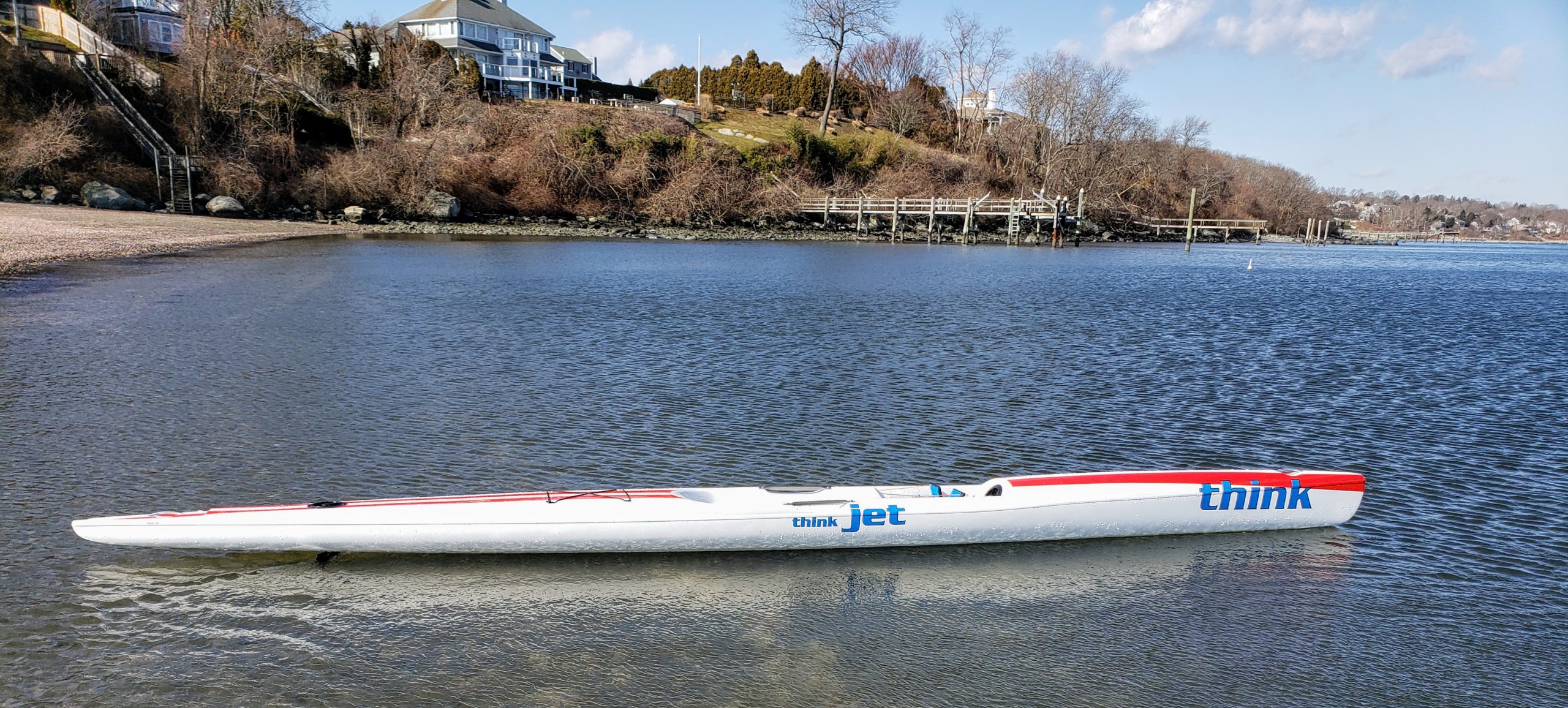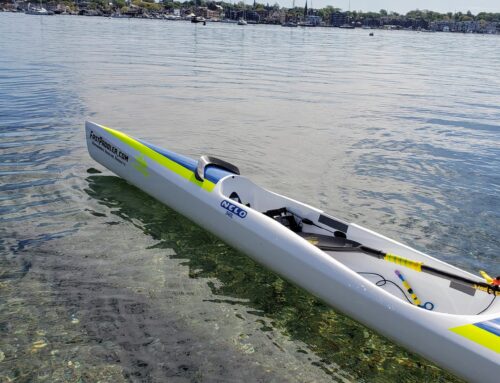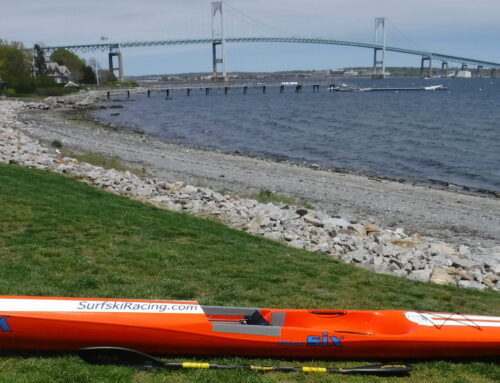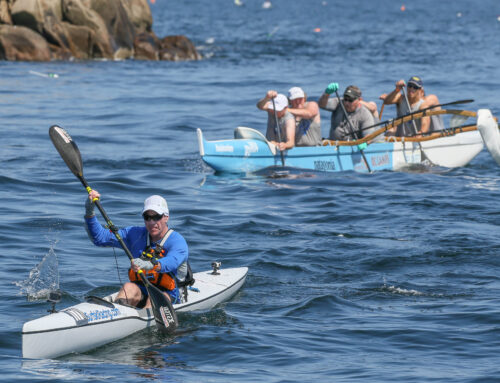Last week I got to try the pint-size Think Jet. It comes in at 17ft by 19 inches and accommodates 80 lbs to 165 lbs. While I am clearly over the weight limit, I took it for a 30-minute paddle yesterday to get a feel for it. It is designed for the kids, petite, small-sized paddlers.
This is a true low volume ski from bow to stern without much freeboard to accommodate the truly lighter paddler. So the benefit is that it feels planted in the water without being corky. Competent paddlers will have a much easier time turning this ski 180 degrees or holding the line on the upwind quarter beam. This is where many novice and intermediate paddlers struggle in medium and larger volume skis. Sitting in the cockpit, the smaller paddler will notice the lower volume bow, the smaller footplate, the lack of freeboard, and a smaller width cockpit. They will be able to comfortably put their legs out over the gunwales, unlike higher volume skis. A huge benefit to lower gunwales and low freeboard is that the Jet will be easier to remount increasing the confidence of paddlers.
Smaller paddlers will also notice that the footplate rails have plenty of room to slide back toward the stern to fit the very short paddler. The hump is very low as not to impede leg drive. The Jet does have calve bump-outs to keep the smaller paddler’s legs in alignment for the great leg drive that is typical in Think skis. At a mere 17ft with perfectly balanced side handles, the Jet is extraordinarily easy to load on your car or store in your garage. While it was designed with kids in mind to get them on the water, I know of quite a few petite/smaller women and several men that will enjoy this ski and feel right at home paddling it in all conditions.
As far as stability, I found it very stable with the advantage of being over the weight limit by 15 lbs and it is 19 inches wide. I think most smaller novice to intermediate paddlers will find it plenty stable. It feels nimble and responsive with little rudder input. Remember it is only 17 ft so less rudder input is required. I was pleasantly surprised in the speed department. Again, it is not designed for my weight, but despite this, it felt eager and responded nicely in the one foot downwind seas here in the cold Northeast. As the temps warm, I will take it out in bigger conditions.
I know of one advanced 170 lb paddler, Rob Mirlenbrink in Florida, who has tested it in the downwind conditions and had a blast due to the responsiveness, speed, and fun factor of a short ski. Rob posted some excellent downwind times in it. Below is a short video of Lisa Hertz Malick paddling the Jet in 2019.
https://www.facebook.com/32701152/videos/10100453339116898/
The below link is elite Think paddler Mackenzie Hynard at the gorge giving it a try.
The trend toward lower volume skis has been seen over the last several years. This is great, particularly for the light to medium weight paddlers. This translates into lighter weight skis, better responsiveness, and easier to remount skis for the smaller paddler. They feel “right-sized”. This is especially is true in the novice range of skis that tend to have wide buckets and ideally too much volume for the smaller paddler. Contrast that to the advanced skis where you have some great choices in lower to mid-volume skis. One reason I have enjoyed the Think skis over the year is their bucket size throughout their line is more narrow than many other brands.
I am fond of saying there is a ski for everyone. Now, Think has expanded its line up to accommodate kids, the smaller and truly lightweight paddlers with the production of the right sized Jet.




Leave A Comment
You must be logged in to post a comment.